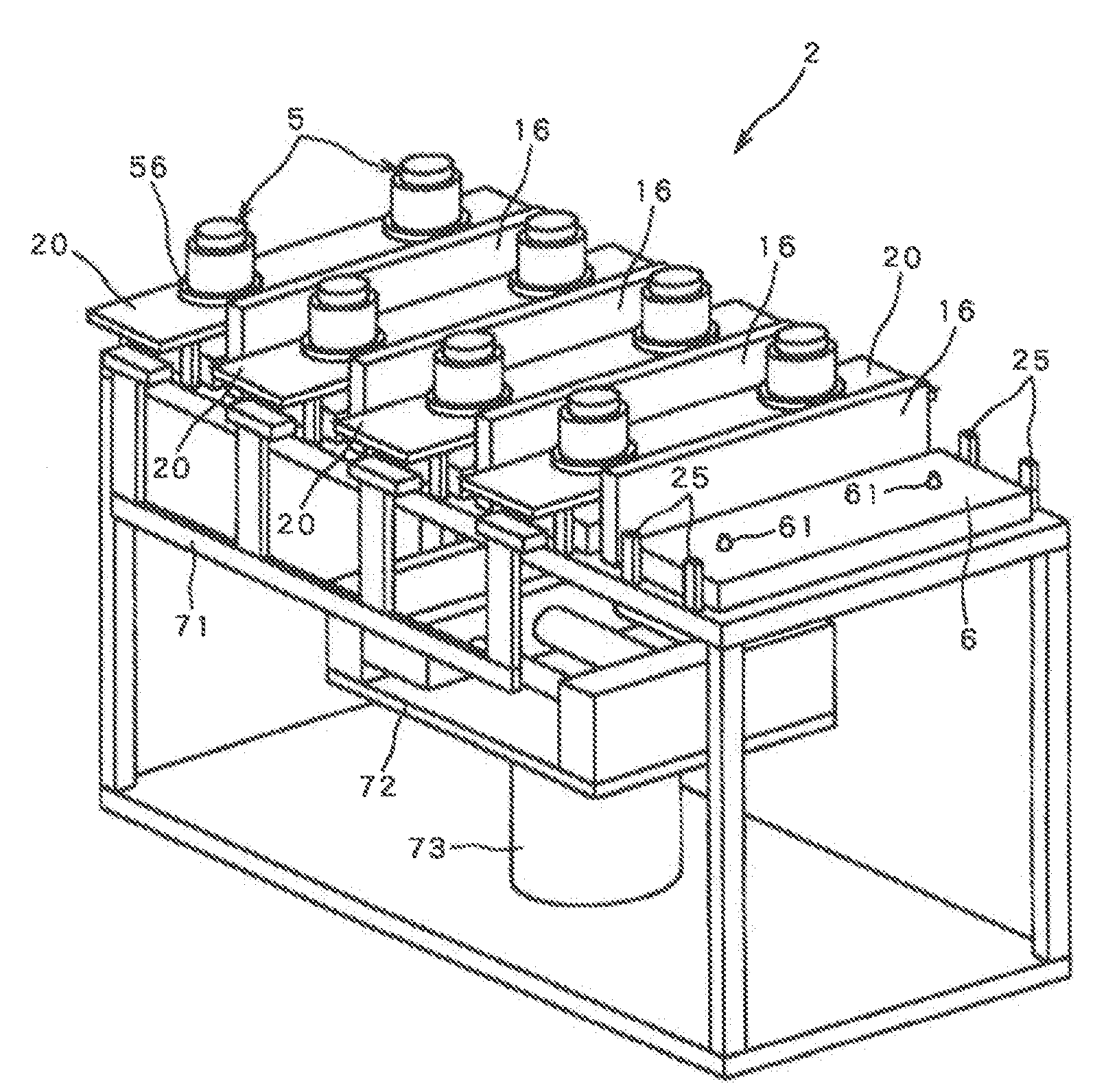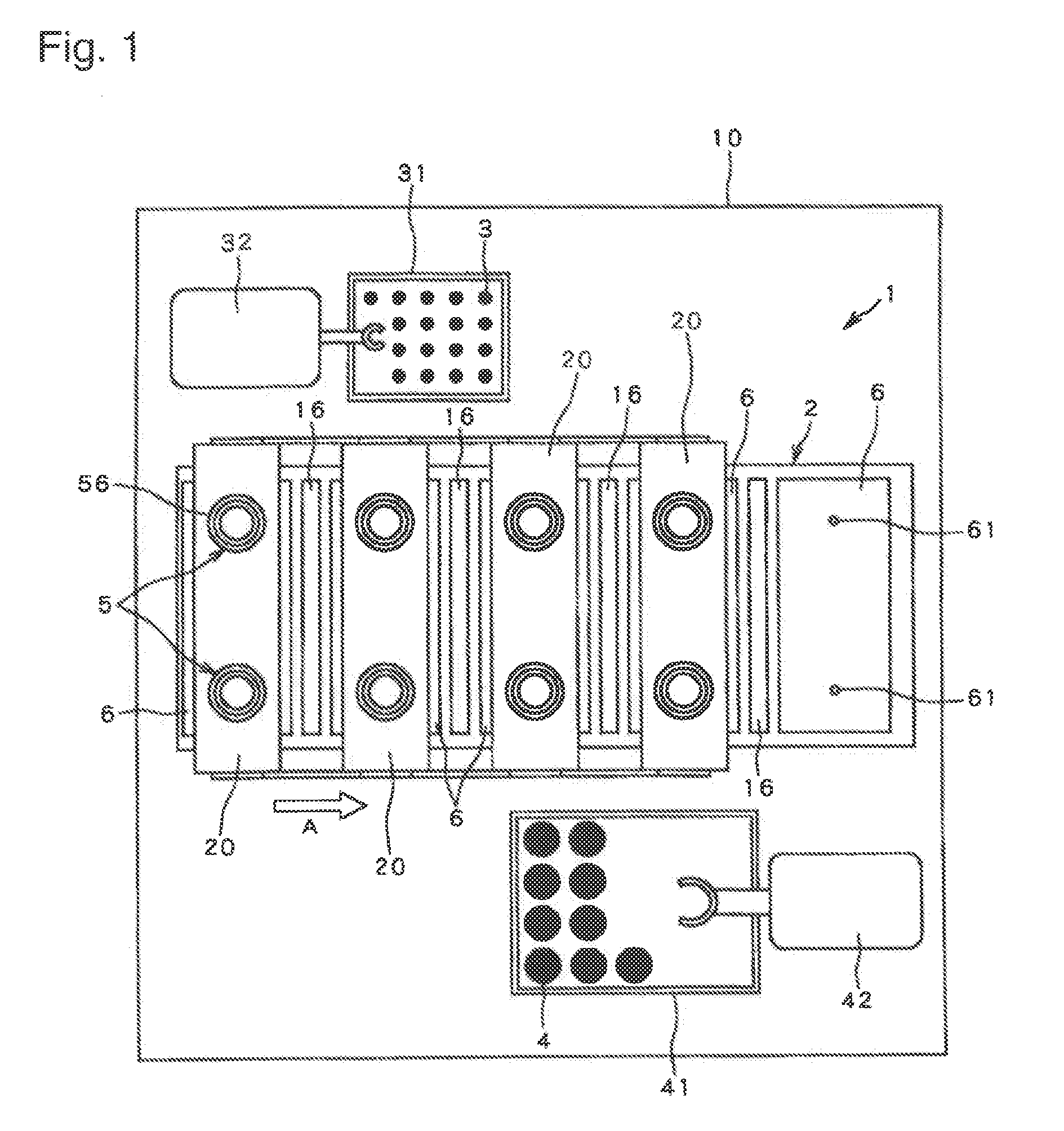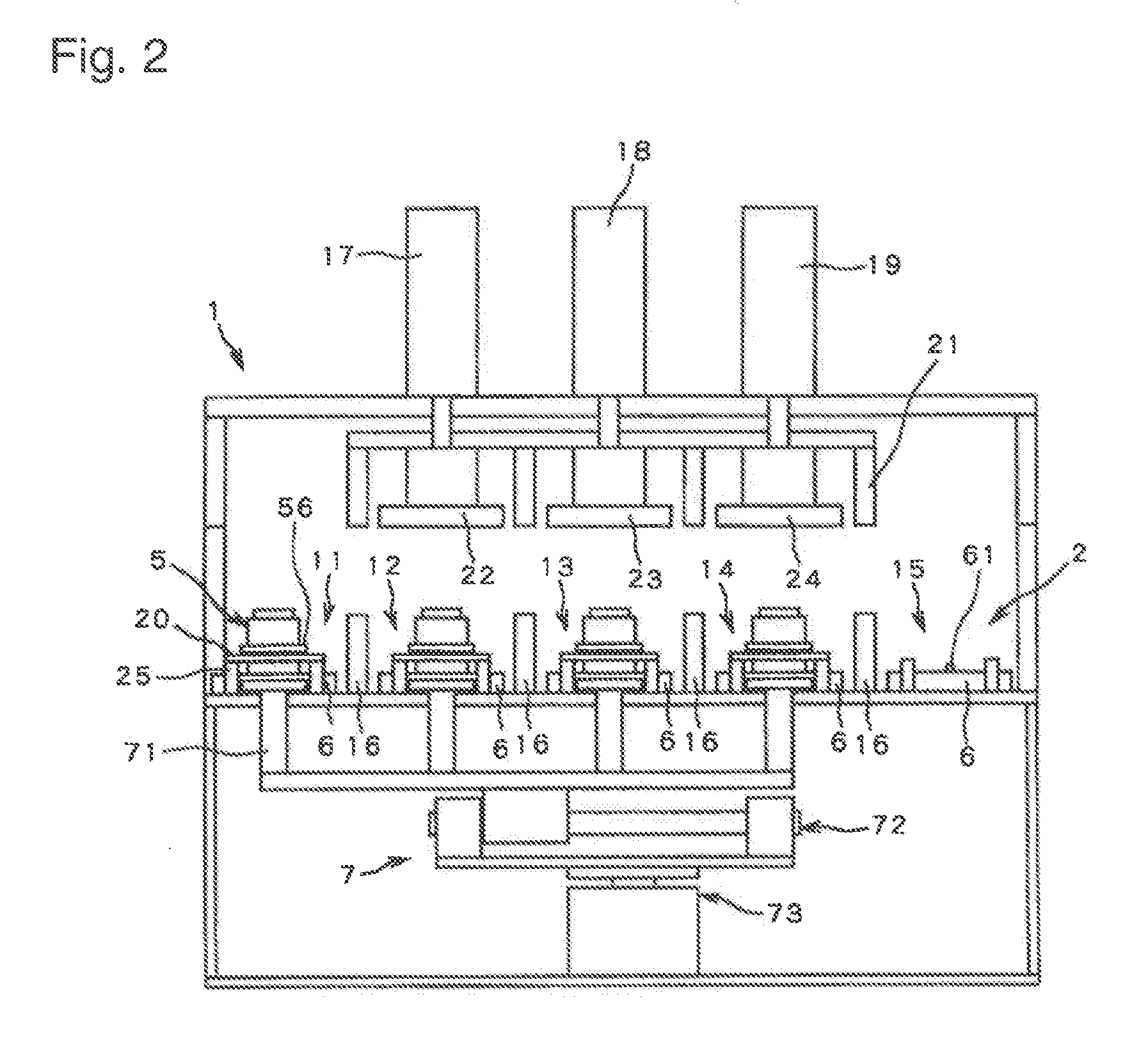Apparatus for molding optical element
a technology of optical elements and molding apparatus, which is applied in the direction of glass pressing apparatus, glass making apparatus, manufacturing tools, etc., can solve the problems of inability to convey molds, deterioration of molding accuracy, and gap between the tables, so as to prevent thermal influence, smooth conveying, and smooth conveying
- Summary
- Abstract
- Description
- Claims
- Application Information
AI Technical Summary
Benefits of technology
Problems solved by technology
Method used
Image
Examples
Embodiment Construction
[0056]FIGS. 1 to 3 show an example of the present invention. FIG. 1 is a plan view, FIG. 2 is a front view and FIG. 3 is a perspective view.
[0057]FIG. 1 is a plan view of entire apparatus. A molding apparatus 1 is accommodated in an air-tight chamber 10, and the chamber 10 is filled with a non-oxidative atmosphere, for example, nitrogen atmosphere.
[0058]A conveying path 2 of linear shape is provided in the chamber 2 to convey a mold 5 in a direction of an arrow A from left to right in the figure. Adjacently to the conveying path 2, a molding material tray 31 for accommodating molding materials 3 being glass balls, and a product tray 41 in which press-molded products 4 being molded optical elements, are disposed, and in the vicinity of the trays 31 and 41, robots 32 and 42 are disposed to convey the molding materials 3 and the products 4 respectively. Replacement of the molding material tray 31 and the product tray 41 are carried out through an in-out port, not shown, of the chamber ...
PUM
| Property | Measurement | Unit |
|---|---|---|
| length | aaaaa | aaaaa |
| time | aaaaa | aaaaa |
| shrinkage | aaaaa | aaaaa |
Abstract
Description
Claims
Application Information
 Login to View More
Login to View More - R&D
- Intellectual Property
- Life Sciences
- Materials
- Tech Scout
- Unparalleled Data Quality
- Higher Quality Content
- 60% Fewer Hallucinations
Browse by: Latest US Patents, China's latest patents, Technical Efficacy Thesaurus, Application Domain, Technology Topic, Popular Technical Reports.
© 2025 PatSnap. All rights reserved.Legal|Privacy policy|Modern Slavery Act Transparency Statement|Sitemap|About US| Contact US: help@patsnap.com



